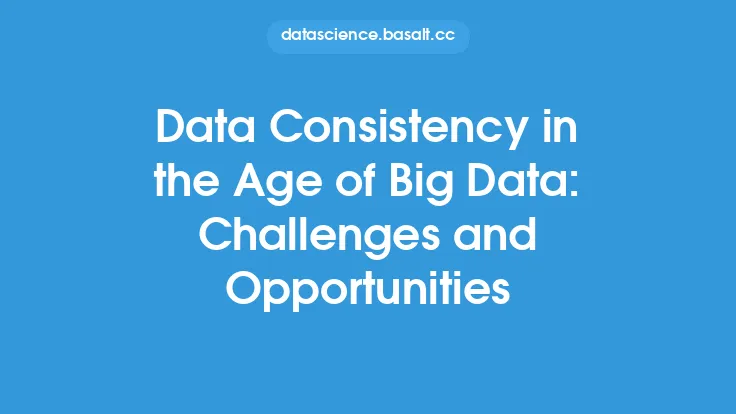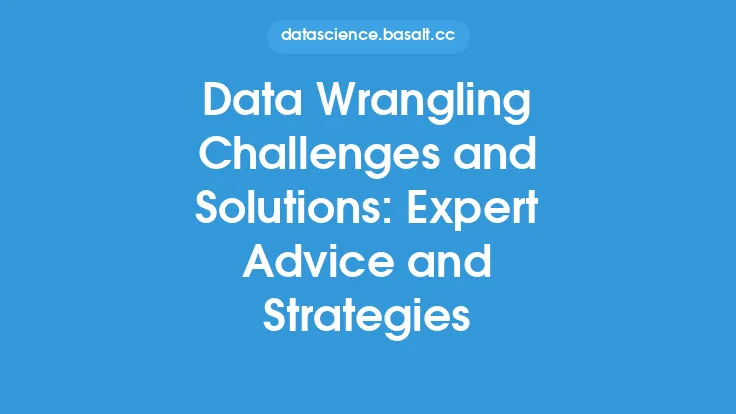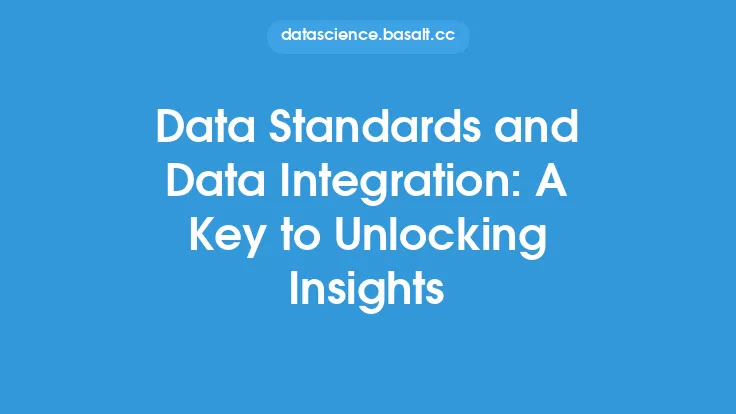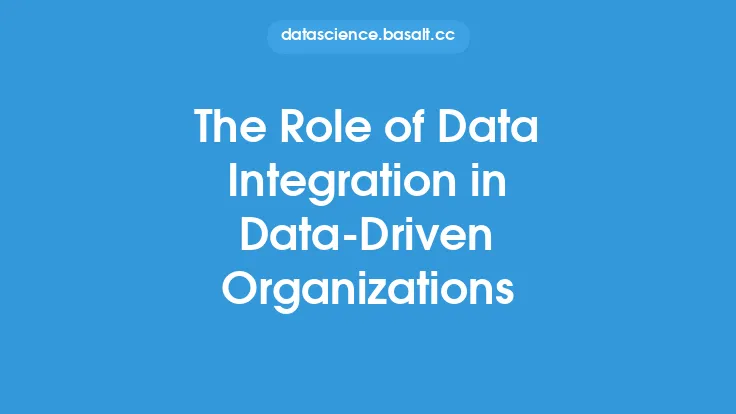In today's complex enterprise environments, data integration has become a critical component of business operations. With the exponential growth of data from various sources, including social media, IoT devices, and applications, organizations are facing significant challenges in integrating and managing their data. The ability to overcome these challenges is crucial for businesses to make informed decisions, improve operational efficiency, and stay competitive in the market. In this article, we will delve into the common data integration challenges faced by enterprises and discuss strategies for overcoming them.
Common Data Integration Challenges
Enterprise environments often deal with large volumes of data from diverse sources, including relational databases, cloud storage, and big data platforms. Some of the common data integration challenges faced by enterprises include data silos, data quality issues, and the lack of standardization. Data silos occur when data is isolated in different departments or systems, making it difficult to access and integrate. Data quality issues, such as inconsistencies, duplicates, and missing values, can also hinder the integration process. Furthermore, the lack of standardization in data formats and protocols can make it challenging to integrate data from different sources.
Technical Challenges
From a technical perspective, data integration challenges can be attributed to the complexity of enterprise architectures. Many organizations have legacy systems, which can be difficult to integrate with modern applications and data sources. Additionally, the use of different data formats, such as CSV, JSON, and Avro, can create integration challenges. The lack of APIs and data governance policies can also make it difficult to integrate data from different sources. Moreover, the increasing adoption of cloud-based services and big data platforms has introduced new challenges, such as data security and compliance.
Overcoming Data Integration Challenges
To overcome data integration challenges, enterprises can adopt a combination of strategies, including the use of data integration tools, data governance policies, and data quality management practices. Data integration tools, such as ETL (Extract, Transform, Load) and ELT (Extract, Load, Transform), can help to extract data from different sources, transform it into a standardized format, and load it into a target system. Data governance policies can help to ensure data quality, security, and compliance, while data quality management practices can help to identify and resolve data quality issues.
Data Integration Tools and Technologies
There are various data integration tools and technologies available, including open-source and commercial solutions. Some popular data integration tools include Apache NiFi, Apache Beam, and Talend. These tools provide a range of features, including data ingestion, data processing, and data transformation. Additionally, cloud-based data integration platforms, such as AWS Glue and Google Cloud Data Fusion, provide a scalable and secure way to integrate data from different sources. The choice of data integration tool or technology depends on the specific needs of the organization, including the type and volume of data, as well as the level of complexity.
Data Governance and Quality Management
Data governance and quality management are critical components of a successful data integration strategy. Data governance policies can help to ensure that data is accurate, complete, and secure, while data quality management practices can help to identify and resolve data quality issues. Some best practices for data governance and quality management include data profiling, data validation, and data certification. Data profiling involves analyzing data to identify patterns and anomalies, while data validation involves checking data against a set of rules and constraints. Data certification involves verifying the accuracy and completeness of data, as well as ensuring that it meets the required standards.
Best Practices for Data Integration
To ensure successful data integration, enterprises should follow best practices, including defining clear goals and objectives, establishing a data governance framework, and implementing a data quality management program. Additionally, organizations should consider the use of data integration tools and technologies, as well as cloud-based data integration platforms. It is also essential to ensure that data integration is aligned with business objectives and that it provides measurable benefits, such as improved decision-making and increased operational efficiency.
Conclusion
Overcoming data integration challenges in enterprise environments requires a combination of strategies, including the use of data integration tools, data governance policies, and data quality management practices. By understanding the common data integration challenges and adopting best practices, organizations can ensure successful data integration and unlock the full potential of their data. As data continues to grow in volume and complexity, the ability to integrate and manage data will become increasingly critical for businesses to stay competitive and make informed decisions. By investing in data integration and adopting a data-driven approach, organizations can improve operational efficiency, enhance customer experience, and drive business growth.





